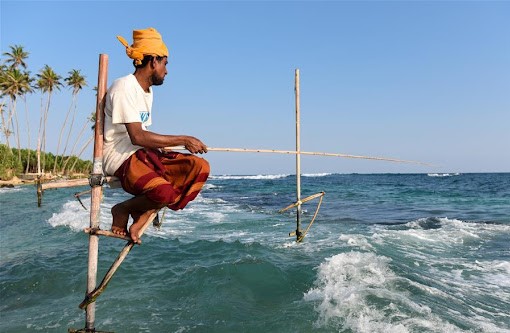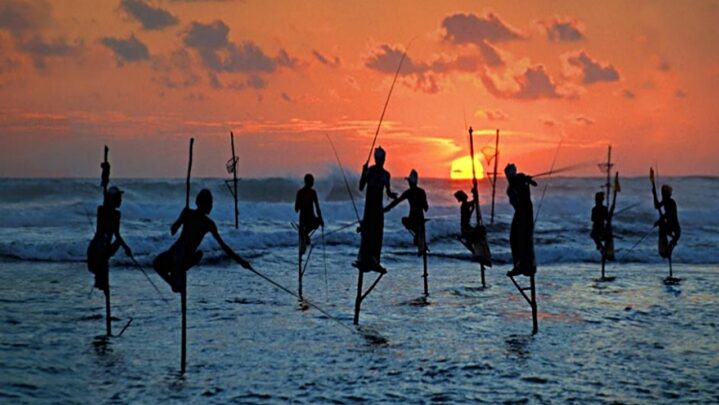Stilt fishing, known as Ritipanna in Sinhalese, is a traditional type of fishing that is peculiar to Sri Lanka, an island nation off the coast of India in the Indian Ocean. Ahangama, Koggala, Welipenna, Kathaluwa and Thalarambe are popular destinations for this type of art. A slender pole is connected to a stick anchored in the seabed. In order to capture some fish, fishermen climb onto this stick and settle on the pole for a few hours.
Fishermen that are found on stilts do not have access to advanced fishing equipment. These men may make a living just by constructing a stilt out of two wooden poles. They make a pole out of Kithul for catching fish, and the fish they catch are kept in a little plastic bag wrapped around their waist.
They have a stilt in one hand and a fishing rod in the other. Those who cannot afford to invest in contemporary fishing equipment will continue to use stilt fishing as a tradition. The fisherman casts his line from this vantage point and waits for a fish to come along to be caught. This art, according to stilt fishermen, necessitates a great deal of patience and endurance.
The technique is thought to have begun during World War II when food shortages and overcrowding at land-based fishing areas pushed some astute men to try their hand at water-based fishing.
During the annual monsoons, all fishing is halted. These fishermen’s limited earnings from the sea are diminishing and may soon vanish. The 2004 tsunami, which wreaked havoc on most of the Indian Ocean coastline, permanently affected the Sri Lankan shoreline and made it more difficult to catch fish with this method.
Fishing comes to a complete halt during the annual monsoons, therefore it’s common for fishermen to rent their stilts to tourists who pose as fishermen.

Keep reading successyeti.com
Also Read: Rama’s Bridge: All You Need To Know About This Incredible Bridge





